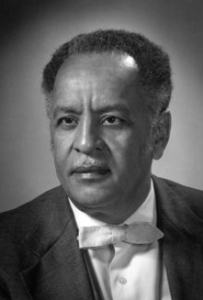 Amoz Everett Gibson
Amoz Everett Gibson
Born: August 3, 1918
Death: May 14, 1982
Place of Birth: Washington, D.C.
Location of Death: Haifa, Israel
Burial Location: Bahai, Cemetery, Haifa, Israel
“To assist me is to teach my cause…”-Bahá’u’lláh
The promulgation of the divine teachings revealed by Bahá’u’lláh was the driving purpose which animated, directed and sustained Amoz Gibson throughout his Bahá’í life. This objective perhaps reached the peak of its force between the years 1976 and 1978 when he became so enamored with the publications of the Universal House of Justice–Tablets of Bahá’u’lláh revealed after the Kitab-i-Aqdas, Selections from the Writings of the Bab and Selections from the Writings of ‘Abdu’l-Baha that he would arise before dawn to read and reread this storehouse of the knowledge of God which seemed to give him so much strength.
Inspired by the Writings, in 1976 he used his vacation period to travel-teach and stimulate the work of the friends in Holland, France, Italy, Mexico and the United States particularly in the southern states and on the Indian reservations.
In countless verses, he pointed out, the friends are exhorted to teach the Faith but in the verse quoted above Bahá’u’lláh gives teaching the station of assistance to Him. This single verse galvanized Amoz into planning, for the summer of 1978, a two-month journey (less than eight weeks during the last nineteen years of his life were spent purely as vacation) which carried him first to the cradle of the Faith to Tihrin, Shiraz, Isfahan, Najaf Abad, Ardistan, Takur, Fort Tabarsi (viewed from outside), Sari, Tabriz, Ridi’iyyih, the summer school and Temple land. In these revered spots Amoz was warmed by the outpouring of love by the friends and chastened and humbled by the miracle of seeing with his own eyes these places he had read about and talked about and loved for so many years. Moreover, he was deeply moved to learn that the family who were our hosts in Tehran had never had the privilege of visiting the House of Bahá’u’lláh until they were permitted to accompany us. Amoz gave freely of himself and of his time; his advice, wisdom and wit won the hearts of the friends. How he lamented when he learned later of the destruction of the precious House of the Bab and the martyrdom of his two hosts in Tabriz, Mr. Yadu’llah Astani and Dr. Faramarz Samandari.
Amoz continued his journey that summer to the United States where he visited Columbia, Maryland; Washington, D.C.; Albuquerque, New Mexico; Dinnebito, Arizona on the Navajo Indian Reservation; Daly City, San Francisco, Placerville and Auburn, California; Reno, Nevada; Wilmette and Chicago, Illinois; Cleveland, Ohio, and Amherst, Massachusetts. Taxing his strength to the utmost he spoke at firesides, public meetings, meetings for Bahá’ís only, and had radio and television interviews as well as numerous private consultations. He urged the friends to concentrate their efforts, to select one person to pray for and to teach, to shower with love and gifts. He volunteered to take back to the Holy Land the names of these people and to pray for them in the Shrines. He pleaded for pioneers, named the countries where they were needed and entreated the friends to seize the bounty of assisting Bahá’u’lláh.
Amoz Everett Gibson was born to Deborah and William Gibson. His mother’s grandfather was a full-blooded Creek Indian; his father’s mother was a mulatto slave and his father’s father was Scotch-Irish.
William Gibson had trained for the ministry at Howard University in Washington, had become a Christian Science healer, still searching, was attending spiritualist meetings when he was directed to a Bahá’í gathering which was meeting in the same building. At his first Bahá’í meeting, some time following the visit of ‘Abdu’l-Baha to Washington, after hearing Mr. Harlan Ober speak for only five minutes, Mr. Gibson realized his search had ended. He embraced the Faith immediately and returning home related the Message to his wife who, that same evening, unhesitatingly accepted Bahá’u’lláh as the return of Christ and the Manifestation of God for this Day.
Amoz attended children’s classes and went often to Feasts with his father; but as there were few activities arranged at that time for youth he did not enroll in the Faith until 1944. Meanwhile, he had received his education in the Washington public schools and in 1940 was graduated from Miner Teachers College (now the University of the District of Columbia) with a B.Sc. degree in education with a major in social studies. In 1941 he married a schoolmate, Mary Elizabeth Lane. Amoz was a government employee at the Washington Navy Yard when he was inducted into the United States Army in 1944. He served with the armed forces in Europe and in the Pacific on Okinawa.
Returning to his home in 1946 he soon became an active participant in the Bahá’í community of Washington, D.C. At various times he served as treasurer and chairman of the Local Assembly, was on regional committees and was elected delegate to the national convention.
Using the benefits of the government educational program for veterans and rental income from his home as means of support while serving in the pioneer field, he traveled to Mexico with his wife and two children, William, seven years old, and Kenneth, two. Amoz fell in love with Mexico and its vibrant people and would have remained there permanently had he and his wife not made a commitment to return to their teaching posts in Washington for at least two more years. In 1951, he received his Master’s Degree, summa cum laude, in geography from Mexico City College (now University of the Americas). Amoz continued his work in the educational field as a teacher at the Browne Junior High School where he had been appointed after his army service. One of his students there would one day become a pioneer to the Pacific and the son-in-law of a martyr of the Faith. Later Amoz was head teacher at the Blow School Annex to Browne; then he was a teacher of geography at Miner Teachers College.
His third son was born in 1952 and when Donald was three years old Amoz and his wife resigned from their jobs and pioneered with their three children to the Navajo Indian Reservation in Arizona and New Mexico. Having no employment, the family at first lived with Mr. James Stone, a pioneer to Gallup, New Mexico. While making every effort to secure a position on the reservation through the U.S. Bureau of Indian Affairs, Amoz got a job washing cars. One day one of his customers, noticing him as a newcomer to the small town of 14,000 inhabitants, began a conversation with him. Learning of Amoz’s situation he immediately arranged an inter- view for him with the director of the Gallup office of the Bureau of Indian Affairs. Within a week, Amoz and his family (except for William who remained in Gallup with Mr. and Mrs. Stone so that he could attend school there) arrived at Pinon, Arizona, near the center of the Navajo Reservation and very close to the Hopi Reservation which it surrounds an ideal spot for pioneers, 150 miles from town with two positions open because no one else wanted to fill them. Both Mr. and Mrs. Gibson taught there for four years.
The first months were spent making friends and adjusting to teaching older children who had never enrolled in school before and who spoke very little English. Soon, firesides were begun; then, at the close of the first school year, Mrs. Meherangiz Munsiff and her daughter, Jyoti, came to visit. The Indian people were greatly attracted to Mrs. Munsiff and in a very marvelous way she set the stage for the first Bahá’í study class which was carried on by the Gibsons weekly. In 1957 Sadye Joe, who attended that initial class, became the first of the Navajo tribe to accept the Faith of Bahá’u’lláh.
Sparked by the American Indian Service Committee, of which Amoz was a member, other pioneers settled on the Navajo-Hopi Reservations and in the towns bordering them. Though distances were great, the roads poor, and driving conditions always hazardous, there was a strong sense of unity and cooperation among the pioneers.
There were two outstanding events which Amoz worked very hard to support and bring to fruition. The first was the visit of Amatu’l- Baha Ruhiyyih Khanum to the reservation in 1960. Her visit cemented relations among the Bahá’ís and stimulated new activities. Also, it aroused the interest of the citizens of that area, making them aware of the international character of the Faith and its worldwide importance.
Meanwhile, other Navajos had entered the Faith, notably Chester and Franklin Kahn and their wives, whose desire to share the Message with their families and friends led to the second event, the large weekend gathering of a thousand or more souls at Pine Springs, Arizona, in 1962. They came from far and near, Bahá’ís and non-Bahá’ís, and slept in clusters around campfires under a canopy of brilliant stars. The Hand of the Cause Zikru’llah Khadem, who with his dignified, loving spirit brought everyone closer to Bahá’u’lláh, provided the stimulus which resulted in the entry of a great number of new believers, more than 100 in just two days. Mr. Khadem said frequently during that weekend, ‘0 God, increase my astonishment in Thee!’ What joy and assurance this meeting brought to Amoz’s heart. At last the work was moving forward.
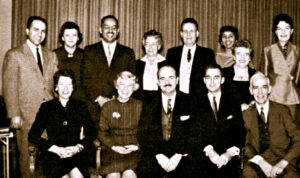
In 1959, Amoz was appointed to the Auxiliary Board for protection; in 1960 he was elected to the National Spiritual Assembly of the United States. As a Board member he traveled extensively throughout the western states and also made a trip to Jamaica and Haiti. He served as a member of the National Teaching Committee for Africa and represented the National Assembly at, the dedication of the Bahá’í Temple in Uganda in 1961, taking this opportunity to teach in the villages near Kampala and making firm and lasting friendships among the African believers.
Amoz moved from Pinon, Arizona, to teach English in the secondary school at Fort Wingate, New Mexico, and resided in Gallup about 14 miles distant. In 1960, after the birth of his daughter, Nancy, he was appointed principal of the Bread Springs Day School in New Mexico, and the family were living there when Amoz, attending the first International Convention in Haifa, in 1963, was elected to the Universal House of Justice. As a small boy, holding his father’s hand as he walked along to Feasts, Amoz had heard him speak about the institution of the Universal House of Justice in such glowing, lofty terms that Amoz never expected it to come into existence during his own lifetime. However, once that institution did come into being he supported it with a deep, unswerving loyalty, with complete obedience and respect, with a feeling of humbleness and awe, and regarded all the other members as his true and loving brothers. It was apparent that they held that same regard for him as they tenderly bore his casket to its resting place.
Just prior to his election to the House of Justice, the entire family, encouraged by Amatu’l-Baha Ruhiyyih Khanum was making arrangements to pioneer to Africa, so the process of breaking ties with the Navajo Reservation, which had become home, was already begun.
Arriving in Haifa in July 1963, Amoz took up his duties and responsibilities with the zest he was always enabled to summon when he found himself in a new and difficult situation. He was particularly pleased to be appointed convener of the Department of Holy Places as this gave him the opportunity to inspect every corner of these hallowed buildings and to assist in providing for their preservation, renovation and day-to-day care. He said he felt, when he stood on the ledge just outside the lantern as was necessary in the course of his duties, that he could stretch out his arms and almost embrace the Shrine of the Bab.
When a new roof had to be put on the Mansion at Bahji, or new gardens laid out; when roads had to be built, or land purchased, or fences put up; when heavy wooden beams had to be secured from Turkey for the house of ‘Abdu’llah Pasha when additional office space had to be found at the temporary seat of the House of Justice on Haparsim Street; when the obelisk was to be erected on the Temple Land; when a completely new electrical system was to be installed in the Shrine of the Bab (completed in October, 1980); when the Permanent Seat of the Universal House of Justice was being planned and built, Amoz was always there, alert, spotting problems and avoiding or correcting them, pacing off metres, measuring walls, writing letters to various companies, inspecting the marble cutting in Italy, visiting stone and gravel pits, signing contracts, restraining or complaining to or encouraging and praising the workers and loving every minute of it. One of his true brothers remarked that he should have been an engineer.
Amoz became ill in San Francisco in August 1980, the evening before he was to fulfill his heart’s desire to visit the Omaha Indian community of Macy, Nebraska, so dear to the Hand of the Cause Amelia Collins, and just after he had participated, in July, in the memorable Native Council of the indigenous believers of North America in Wilmette, Illinois.
Upon his return to Haifa his illness was diagnosed as acute lymphoblastic leukemia, which usually attacks the young and is often curable in children. During his ‘heroic struggle’ against this disease Amoz lightened the hearts with his ready wit and open smile and won the admiration of doctors, nurses and patients whom he met at the clinic where he went periodically for treatment. H e took their photographs and distributed them as gifts; he sent them flowers and generally showered them with love. He was able to enjoy about a year of complete remission.
When that period ended he decided to visit each one of his children whom he so dearly loved and who, in turn, had given him so much devotion and appreciation throughout the years that often deprived them of his presence. This journey t o Australia where Amoz had the bounty of his first visit to the Mother Temple of the Antipodes; to New Zealand to see Nancy and her husband, Jonathan; to Oakland, California, where Diane, Kenneth and Chehreh live; to Albuquerque, New Mexico, to visit Cheryl, Don, Lanya and Marla; and to Washington where he was joined by Bill who had braved snowy roads on his trip from Massachusetts and New York to see his father, this journey Amoz was able to accomplish by the grace of God, the loving consideration of Bahá’ís and non-Bahá’ís alike, and by his own strong will and determination.
When he was no longer able to fulfill his duties, to actively serve the Cause, to assist Bahá’u’lláh by teaching, it seemed he had little desire to remain on this plane of existence. Despite this, out of compassion for those around him, he compelled his spirit to shine brightly and gladly till the very end.
He passed away in Haifa on May 14, 1982, having had the bounty just three weeks before of praying in the three Holy Shrines with his wife, four children, one of his daughters-in- law and two of his three grandchildren. As his daughter Nancy so lovingly expressed he was a dearly-loved husband, father and grandfather whose whole life-work was devoted to the service and promulgation of this blessed Cause, whose laughter and radiance were an inspiration to all and whom we love with all our hearts.
The Universal House of Justice, on May 15, sent the following cable to the Bahá’ís of the world:
WITH SORROWFUL HEARTS LAMENT LOSS OUR DEARLY-LOVED BROTHER AMOZ GIBSON WHO PASSED AWAY AFTER PROLONGED HEROIC STRUGGLE FATAL ILLNESS. EXEMPLARY SELF SACRIFICING PROMOTER FAITH ACHIEVED BRILLIANT UNBLEMISHED RECORD CONSTANT SERVICE FOUNDED ON ROCKLIKE STAUNCHNESS AND DEEP INSATIABLE LOVE FOR TEACHING WORK PARTICULARLY AMONG INDIAN AND BLACK MINORITIES WESTERN HEMISPHERE AND INDIGENOUS PEOPLES AFRICA. HIS NOTABLE WORK ADMINISTRATIVE FIELDS NORTH AMERICA CROWNED FINAL NINETEEN YEARS INCALCULABLE CONTRIBUTION DEVELOPMENT WORLD CENTRE WORLD EMBRACING FAITH. PRAYING SHRINES BOUNTIFUL REWARD HIS NOBLE SOUL THROUGHOUT PROGRESS ABHA KINGDOM. EXPRESS LOVING SYMPATHY VALIANT BELOVED WIDOW PARTNER HIS SERVICES AND BEREAVED CHILDREN. ADVISE HOLD BEFITTING MEMORIAL GATHERINGS EVERYWHERE BAHAI WORLD AND COMMEMORATIVE SERVICES ALL MASHRIQUL ADHKARS
Images:
Photo Courtesy of Mary Frances
Bahá’í News April 1960
Source:
The Bahá’í World. Kidlington, Oxford: George Ronald Publisher. Volume 18 pp 665 – 669

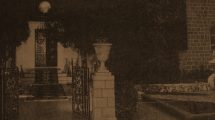
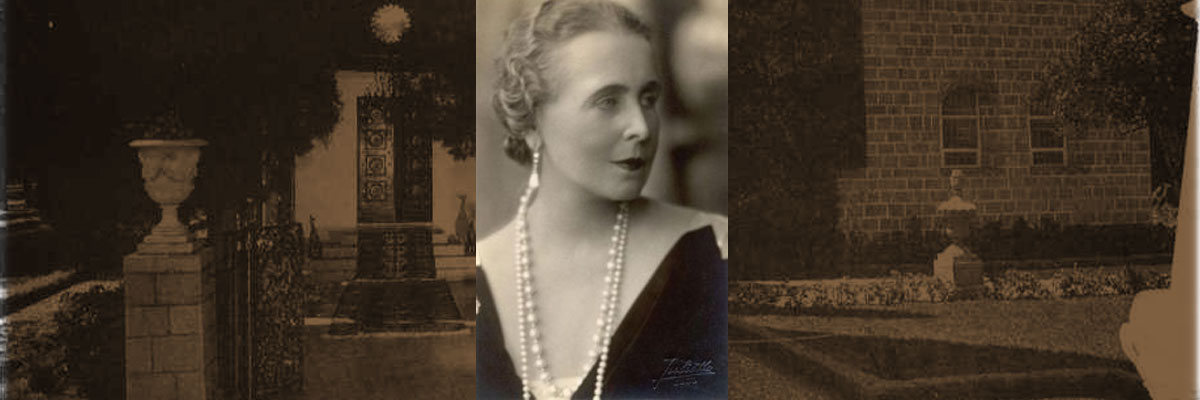


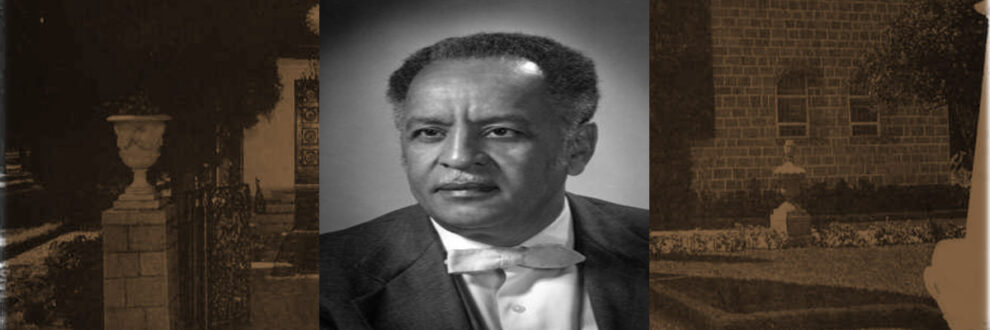


Praise be to God that we have had such a brilliant “light”, Amoz Everett Gibson, in service to our Beloved Cause with such wonderful distinction.
May God’s bounties and blessing always shower upon him and his family in all the worlds of God.